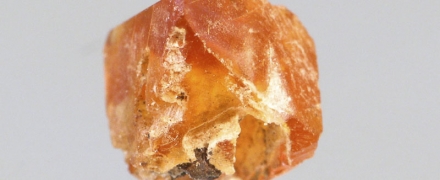open 10 am - 7 pm
laboratory is closed
Treasure from coal

Everyone knows such minerals associated with carbon and organic matter as diamond and numerous fossil resins, the most prominent representative of which is Baltic amber (succinite or hedano-succinite). But in the bowels of the earth, organic matter can also give other gems, one of which is mellite. This is a mineral that resembles transparent amber in appearance, having a color from yellow-brown to light gray, almost colorless, characteristic of brown coal deposits that have undergone slight hydrothermal processing. Of course, a stone with a hardness of 2-2½ on the Mohs scale cannot count on a top place among jewelry stones, but this mineral, in addition to the decorative collection value of relatively large crystals, provides material for the work of cutters who produce decorative collectible cuts designed to demonstrate the beauty of the cut stone. in the showcase of the collection. Raw cut-quality mellite is very rare, however, suitable stones come to the market from the deposits of the island of Tasmania, a few deposits in Germany and the Czech Republic. Our country is not deprived of a source of mellite either, in the coals of the brown coal basin near Moscow there are individuals who sow doubts in the souls of collectors - to leave a sample in the form of a crystal or give it for manufacturing, albeit a small (up to half a carat or less) but rare cut.
В геммологической практике бывают весьма увлекательные случаи с диагностикой ювелирных вставок
Но помимо редкости цвета и высокой стоимости таких камней, многие розовые камни выделяются одной замечательной особенностью – они проявляют плеохроизм, то есть в зависимости от положения осмотра камня он может иметь дополнительные оттенки – оранжевый или пурпурный.
Currently, gemstones are produced by two fundamentally different technological methods - the High Pressure - High Temperature method (“HPHT”, High-pressure & High-temperature) and the Chemical Vapor Deposition (“CVD”, Chemical vapor deposition) method. The "HPHT" method is the most tested classical synthesis method, which can be used both carbon deposition on diamond from flux melts and catalytic reactions. In "CVD" synthesis, diamond growth occurs on a seed during carbon deposition mainly from a gaseous medium at relatively low temperatures and pressures.
Jewelry and precious stones are just such a category of goods, when buying which you need to pay attention to many criteria.
Sogdianite is a rather rare mineral and more often it can be found as a collection material (moreover, in systematic collections), and it is extremely rare in jewelry.






